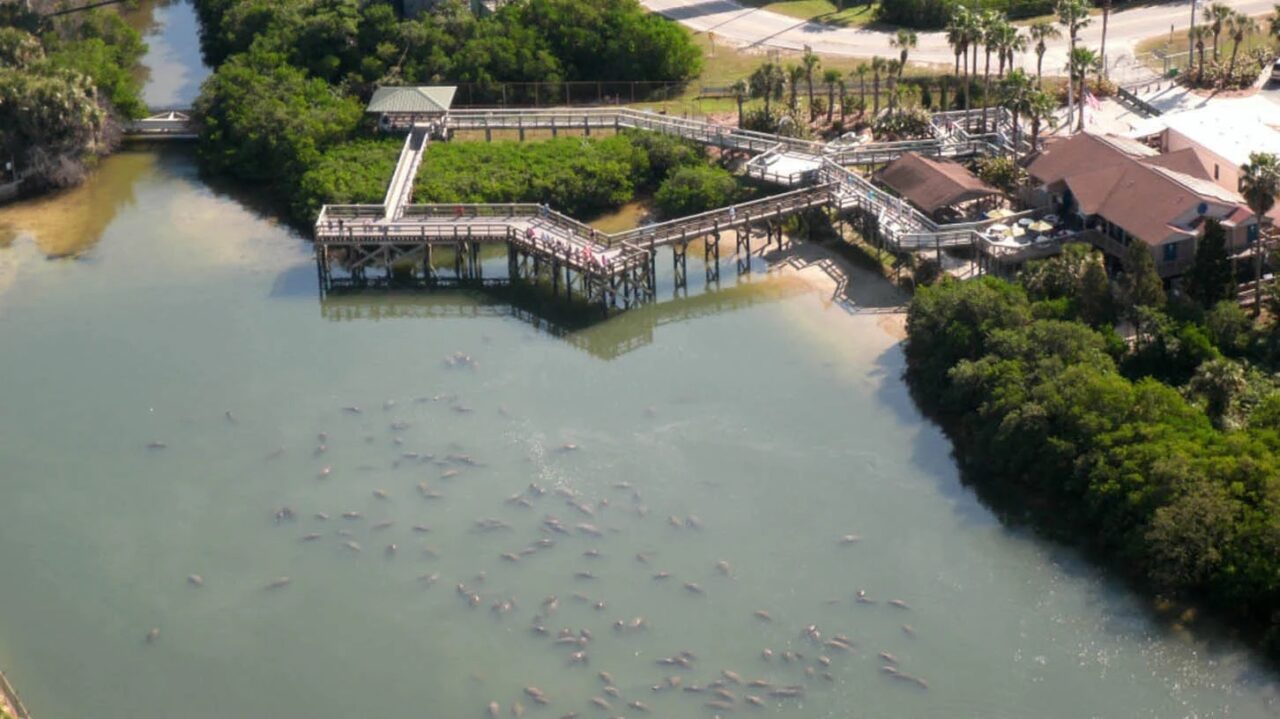
Tucked away on 500 acres of pristine waterfront near Tampa Electric’s Big Bend Power Plant, the Florida Conservation and Technology Center (FCTC) is where Florida’s wildlife and the future of clean energy come together.
More than just a conservation hub, the facility serves as a dynamic space where collaboration, cutting-edge technology and environmental protection intersect to create a brighter, more sustainable future.
Made possible by three champions of the environment — Tampa Electric, the Florida Aquarium and the Florida Fish and Wildlife Conservation Commission (FWC) — the center is a testament to the power of partnership.
Seasonally open from Nov. 1 to April 15, the FCTC invites the public to explore its exhibits, participate in educational programs and witness the innovative work being done to protect Florida’s wildlife and natural resources. Operating hours are 10 a.m. to 5 p.m., with free admission and parking for all visitors.
Last week, Tampa Electric welcomed several guests to tour the FCTC, showcasing the cutting-edge conservation and research taking place on the campus. The group consisted of legislative staff from offices of lawmakers across the region, including Reps. Danny Alvarez, Linda Chaney, Traci Koster and Susan Valdés.
Also present were staff members from the offices of Sens. Danny Burgess, Colleen Burton and Darryl Rouson, as well as legislative staff for Hillsborough County Commissioners Chris Boles, Donna Cameron Cepeda and Gwen Myers. Finally, representatives attended for U.S. Reps. Vern Buchanan and CFO Jimmy Patronis.
The FCTC prioritizes the formation of meaningful partnerships to address complex environmental challenges Florida faces. Tampa Electric plays a central role in this effort, demonstrating its commitment to environmental stewardship through its own key initiatives, including the Manatee Viewing Center and the Tom Hernandez Clean Energy Center.
In addition, Tampa Electric collaborates with a diverse network of partners such as the Florida Aquarium, the FWC, the University of Florida and the Guy Harvey Foundation. This multidisciplinary approach ensures that the FCTC is not just a place for conservation — it’s a catalyst for change.
“The Florida Conservation and Technology Center is a groundbreaking fusion of technological innovations and hands-on conservation across many disciplines,” said Jason Lemus, Research Administrator at FWC.
“An exciting operation within this initiative is the state-of-the-art FWC Marine Fisheries Enhancement Center, which plays a crucial role in advancing fisheries stock enhancement using cutting-edge hatchery systems and applied research that contributes to the long-term health and resilience of inshore saltwater sportfish populations which support thousands of jobs in coastal communities and generate hundreds of millions of dollars to Florida’s economy each year spearheaded by angling tourism.”
One of the standout features of the FCTC is the Manatee Viewing Center (MVC), managed and operated by Tampa Electric. Located near the warm discharge waters of the Big Bend Power Plant, the MVC offers visitors an up-close look at Florida’s iconic manatees in their natural habitat. The warm water outflow from the plant provides a safe haven for manatees, especially during the colder months.
“By bringing together experts from conservation, energy and education, the Florida Conservation and Technology Center is redefining what it means to protect the environment,” said Carlos Aldazabal, Tampa Electric’s Vice President of Energy Supply. “Here, collaboration isn’t just a buzzword — it’s the foundation of everything we do.”
Beyond offering a unique observation experience, the MVC plays a crucial role in manatee rescue and rehabilitation efforts. Tampa Electric collaborates with top wildlife organizations, such as ZooTampa and Clearwater Marine Aquarium Research Institute, to rehabilitate injured or sick manatees. After receiving necessary care, these animals are released back into the wild, where they are closely monitored to ensure their successful recovery.
The manatee sanctuary established at Big Bend is a critical part of Florida’s efforts to protect these vulnerable creatures, which rely on the warmth of the plant’s water to survive the Winter months. By offering these animals a safe place to thrive, the FCTC is contributing to the preservation of a species that holds cultural and ecological significance in the Sunshine State.
While manatees take center stage at the FCTC, the efforts to preserve Florida’s unique marine life extend far beyond them.
The Florida Aquarium operates their Sea Turtle Rehabilitation Center nearby that focuses on the rehabilitation and release of endangered sea turtles. Injuries caused by boat strikes or entanglement in fishing gear often leave these turtles in need of specialized care. Once rehabilitated, the turtles are released back into the wild, a process that ensures their survival and return to the ocean.
“The FCTC is a game-changer for how we approach collaborative conservation,” said Debborah Luke, Senior Vice President of Conservation at the Florida Aquarium. “It serves as a unique venue where experts and innovators come together to transform how we protect species and restore Florida’s essential ecosystems. FCTC visitors can observe these efforts in real-time, all at no cost.”
The Florida Aquarium also plays a pivotal role in restoring Florida’s coral reef tract by growing and spawning endangered coral species, with globally recognized success. Through advanced research and cultivation of endangered coral species in the Coral Conservation Center, the Aquarium is actively contributing to the restoration of one of the world’s most vital marine ecosystems.
The FCTC is also dedicated to inspiring the next generation of environmental leaders, blending education with conservation. Programs offered by the Suncoast Youth Conservation Center, operated by the FWC, introduce children and young adults to the wonders of Florida’s natural landscapes. Whether kayaking through mangroves, learning to fish or participating in hands-on conservation activities, these youth programs instill a deep appreciation for nature and a sense of responsibility for its future.
“At the Suncoast Youth Conservation Center, we’re preparing the next generation of environmental leaders by giving them real-world, hands-on experiences in nature,” said Candice Wade, Director of the Suncoast Youth Conservation Center. “We’re not just teaching them about conservation — we’re inspiring them. The Florida Conservation and Technology Center is helping ignite a passion for protecting Florida’s natural landscapes that will last a lifetime.”
The Guy Harvey Foundation provides educational experiences that bring students and teachers into the field, helping them connect with the ocean and its ecosystems on a personal level. These initiatives foster a deeper understanding of the challenges threatening our oceans and inspire future conservationists to take action.
Though focused on Florida’s ecosystems, the FCTC has a global reach. Visitors from all across the world come to see firsthand how a combination of technology, conversation and education can drive positive environmental change. The center offers an opportunity to explore the critical connection between local actions and global impact, demonstrating how sustainable practices can benefit not just Florida, but the world.
Through its network of partners and commitment to innovation, the FCTC exemplifies the power of collaboration. By working together, whether it’s through manatee conservation, sea turtle rehabilitation or clean energy initiatives, Tampa Electric and its partners are proving that change is possible when communities unite for a common cause.



